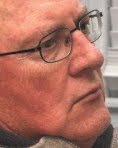
The differential amplifier is a very useful circuit where it is necessary to amplify either an AC or audio signal that is a differential input-- that is two input lines, neither one of which is ground or common. It can also be used to amplify small DC signals that are of a differential nature such as a strain gage or bridge measurement. Looking at Fig. 1, a circuit is shown that would be suitable for AC signals in the range of 20 HZ to 200KHZ with the component values listed below.
In Fig. 1, assume that R1 and R3 are matched in value and R2 and R4 are matched. Then the gain of the amplifier is
Vo = Vdiff * R2 / R1
where Vdiff is the differential voltage of the signal source. In terms of the two input lines from the differential source, with voltage values of V1 (high side input) and V2 (low side input) relative to ground, the output voltage will be
Vo = (V2 – V1) * R2 /R1
If the resistors are not matched the output will be in error according to the amount of miss-match. The output voltage due to the non-inverting input will be
Vo+ = V2 * ( R3 / ( R3 + R4 )) * (R1 + R2) / R1
and the output due to the inverting input will be
Vo- = - V1 * R4 /R3
The net output will then be
Vo = (Vo+) + (Vo-)
The error in gain can now be computed in terms of the individual resistor values. The action of the differential amplifier is to combine the non-inverting signal with the inverting signal inputs and produce an output that reflects the difference (or sum) of the two inputs multiplied by the effective gain.
If the signal is DC only then the capacitors in Fig. 1 should be removed. Otherwise, the capacitors can be used to couple an AC signal with isolation of the amplifier from the location of the source. High voltage capacitors can be used to provide the required amount of isolation.
For you brave souls out there, below is a list of component values needed to build an experimental amplifier with a gain of ten. The V+ and V- voltages for the CMOS type amplifier should be + or – 5 volts DC maximum. The amplifier circuit should have a pass band from 20HZ to 200KHZ with harmonic distortion of -70DB or lower, according to SPICE simulations. Traces should be kept very short and the power supply rails should be very well filtered to block power supply noise.
List of components:
Op-amp IC LTC6241HV
C1, C2 0.22 MFD
C3 10 PF
R1, R3 10K
R3, R4 100K
The load resistance should be greater than 100 ohms to avoid over heating of the amplifier or excessive output current and likely distortion. Also, although the amplifier is a “rail-to-rail” amplifier, it is wise not to overload the input with large input voltages to avoid “clipping” and distortion.
In Fig. 1, assume that R1 and R3 are matched in value and R2 and R4 are matched. Then the gain of the amplifier is
Vo = Vdiff * R2 / R1
where Vdiff is the differential voltage of the signal source. In terms of the two input lines from the differential source, with voltage values of V1 (high side input) and V2 (low side input) relative to ground, the output voltage will be
Vo = (V2 – V1) * R2 /R1
If the resistors are not matched the output will be in error according to the amount of miss-match. The output voltage due to the non-inverting input will be
Vo+ = V2 * ( R3 / ( R3 + R4 )) * (R1 + R2) / R1
and the output due to the inverting input will be
Vo- = - V1 * R4 /R3
The net output will then be
Vo = (Vo+) + (Vo-)
The error in gain can now be computed in terms of the individual resistor values. The action of the differential amplifier is to combine the non-inverting signal with the inverting signal inputs and produce an output that reflects the difference (or sum) of the two inputs multiplied by the effective gain.
If the signal is DC only then the capacitors in Fig. 1 should be removed. Otherwise, the capacitors can be used to couple an AC signal with isolation of the amplifier from the location of the source. High voltage capacitors can be used to provide the required amount of isolation.
For you brave souls out there, below is a list of component values needed to build an experimental amplifier with a gain of ten. The V+ and V- voltages for the CMOS type amplifier should be + or – 5 volts DC maximum. The amplifier circuit should have a pass band from 20HZ to 200KHZ with harmonic distortion of -70DB or lower, according to SPICE simulations. Traces should be kept very short and the power supply rails should be very well filtered to block power supply noise.
List of components:
Op-amp IC LTC6241HV
C1, C2 0.22 MFD
C3 10 PF
R1, R3 10K
R3, R4 100K
The load resistance should be greater than 100 ohms to avoid over heating of the amplifier or excessive output current and likely distortion. Also, although the amplifier is a “rail-to-rail” amplifier, it is wise not to overload the input with large input voltages to avoid “clipping” and distortion.

No comments:
Post a Comment